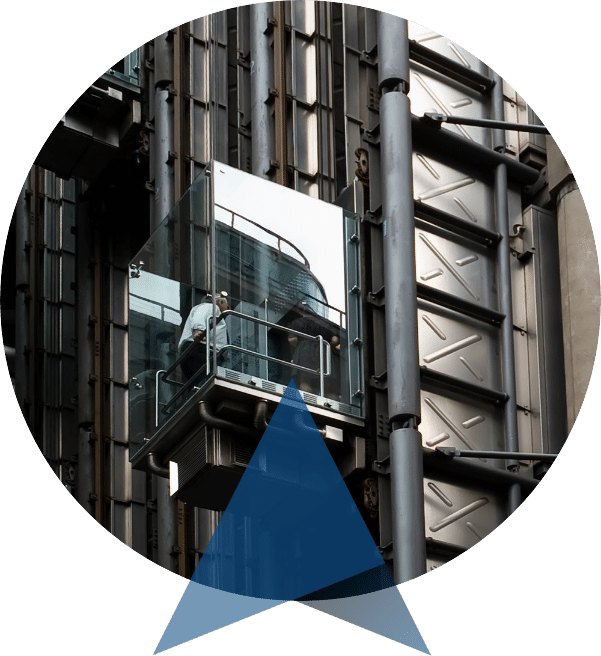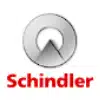The Lift Types We Service
What Is a Lift?
A lift, or elevator, is a device used for vertical transportation in buildings, designed to carry passengers or goods between floors. Lifts play an essential role in commercial, residential, and industrial environments, providing accessibility and efficiency. They operate using either hydraulic, traction, or machine-room-less (MRL) systems.

What Types of Lifts Do We Service?
Passenger Lifts
Passenger lifts are designed for transporting people between floors in various buildings, from residential blocks to commercial offices. They are equipped with safety features and vary in size depending on the building’s needs.
Access Lifts
Access lifts are designed for individuals with limited mobility, offering convenient and safe access between floors. These lifts comply with accessibility regulations and are often found in public spaces, ensuring equal access for everyone.
Goods Lifts
Goods lifts are robust, heavy-duty lifts designed to carry large and bulky items in warehouses, factories, or storage facilities. They can handle significant loads and are crucial for moving goods efficiently between floors.
Loading Bay Dock Levellers
Loading bay dock levellers are specialised lifting platforms used to bridge the gap between a loading bay and the vehicle. They are essential for loading and unloading heavy goods, providing safe and efficient transportation between different levels.
Platform Lifts
Platform lifts are simple and effective solutions for moving people or goods between short distances. These lifts are ideal for providing vertical transportation in small buildings where installing a full passenger lift may not be feasible.
Service Lifts
Service lifts, also known as dumbwaiters, are small lifts designed to transport goods between floors. They are commonly used in hotels, restaurants, and hospitals for quick and efficient delivery of items.
Office Lifts
Office lifts are tailored to commercial office environments, offering a smooth and efficient means of vertical transportation for employees and visitors. These lifts are designed to handle moderate traffic levels and integrate seamlessly into high rise buildings.
Hotel Lifts
Hotel lifts are designed to cater to both guests and service staff, offering smooth, quiet, and efficient operation. They can be equipped with additional features, such as luggage-friendly cabins and enhanced control systems for better service.
Retail Lifts
Retail lifts are designed for shopping centres and stores, providing vertical transportation for customers and staff. These lifts often incorporate additional safety and design features to ensure accessibility and comfort for all users.
Technical Specifications
Passenger Lifts
Passenger lifts can carry between 4 to 20 people, with capacities ranging from 300 to 1600 kg. They are available in different speeds and sizes depending on the height of the building and traffic levels, ensuring quick and safe transportation.
Access Lifts
Access lifts are generally smaller, carrying up to 500 kg. They are designed for ease of use, with features such as automatic doors, easy-to-use controls, and safety rails. Maintenance includes regular checks of emergency stop buttons and platform safety.
Goods Lifts
Goods lifts can transport loads up to 5,000 kg or more, depending on the application. These lifts are larger, with robust platforms designed for heavy loads, requiring frequent maintenance to ensure smooth operation of the traction and brake system.
Loading Bay Dock Levellers
Dock levellers typically have a weight capacity between 6,000 to 12,000 kg, depending on the model. These levellers come with hydraulic or mechanical systems, requiring regular maintenance of the hydraulic fluid, mechanical components, and control system.
Platform Lifts
Platform lifts can carry up to 1,000 kg and are typically used for short distances. The platform size and lift capacity are customised according to the specific needs of the building. Maintenance involves regular inspections of the hydraulic power and control systems.
Service Lifts
Service lifts usually carry loads between 50 and 300 kg. Their compact dimensions make them ideal for use in restricted spaces, but regular checks of the electric motor and pulley systems are essential for optimal performance.
Office Lifts
Office lifts are typically designed to carry between 500 and 1,500 kg, handling moderate traffic efficiently. These lifts often have energy-efficient motors and advanced control systems for smooth operation. Maintenance includes routine inspection of the traction and control systems.
Hotel Lifts
Hotel lifts typically carry up to 1,200 kg and are designed for smooth, quiet operation to minimise disruption to guests. They may also feature special control systems that allow for easy transport of luggage and housekeeping items.
Retail Lifts
Retail lifts are designed to handle moderate traffic and can carry up to 1,600 kg. With larger cabins to accommodate shopping carts and heavy goods, these lifts need regular maintenance of traction systems and safety features to ensure continuous operation.
Manufacturers

Otis Elevators
Otis provides a wide range of passenger and goods lifts, with a focus on energy efficiency and innovative design. Their products are known for durability and reliability, making them a trusted choice for commercial buildings.

KONE
KONE specialises in machine room less lifts and eco-efficient lift solutions. They offer a variety of lifts tailored for different environments, from high-rise passenger lifts to platform and access lifts for smaller buildings.

Schindler
Schindler manufactures a diverse range of lifts, including gearless traction lifts and goods lifts. They focus on providing high-performance vertical transportation solutions for office buildings, retail spaces, and residential complexes.

ThyssenKrupp
ThyssenKrupp offers bespoke lifts tailored to meet the specific needs of different buildings, from office lifts to hotel lifts. They are well-known for their hydraulic lifts and traction lift systems, providing reliable and efficient vertical transportation.
Trusted Lift Engineers Across Essex & London
At Future Lift Services, our engineers are fully qualified, regularly trained, and backed by years of hands-on experience with leading lift systems, including Otis, KONE, Schindler, and ThyssenKrupp. Whether you’re managing a commercial property, retail space, or residential development, our team ensures every lift we work on is safe, efficient, and compliant with current UK regulations, including LOLER.
We pride ourselves on:
- Clear communication and responsive support
- Planned preventative maintenance and fault resolution
- Detailed inspections aligned with LOLER and PUWER standards
- Flexible servicing plans for both new and legacy lifts
- Working with Future Lift Services means peace of mind — knowing your lifts are in expert hands.
Need a qualified engineer to assess your current lift system?
Lift Types FAQs
What lift should I choose for my hotel?
Can I use a passenger lift for my storage facility?
No, a passenger lift is not suitable for a storage facility. You should opt for a goods lift, designed specifically to carry heavy and bulky items safely and efficiently.
What are the dangers of installing a lift in an older building?
Older buildings may require structural reinforcement before installing a modern lift. There are potential issues with compatibility and safety, especially if the building does not meet current standards for lift installation.
What are the regulations for installing a lift?
Lifts must comply with UK building regulations, including safety features, accessibility for disabled users, and routine maintenance checks to ensure safe operation. Inspections are required to ensure regulatory compliance.
Do you offer on-site lift inspection?
Yes, we provide comprehensive on-site lift inspections to ensure that your lifts are compliant with safety regulations and operational requirements.
Do you have any special subscription plans or memberships?
Yes, we offer subscription plans that include regular maintenance, inspections, and priority servicing to ensure that your lift remains in optimal working condition.
